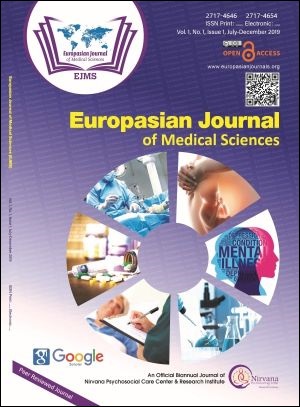Evaluation of Facial and Dental Midline Discrepancies in Nepalese Population
Keywords:
Coincidence, Dental midline, Facial midlinesAbstract
Background: The facial midline is defined by the landmark such as the nose, philtrum, and chin aligned in a straight line. It should be in the center of the face and should coincide with the dental midline. But clinically it is often observed that some discrepancies exist between facial and dental midlines. Thus the aim of this study was to evaluate the facial and dental midline discrepancies.
Methods: A total of 300 subjects, 150 male and 150 female from People’s Dental College and Hospital were selected. Full facial view standardized photograph with a posed smile with teeth in occlusion was taken with Canon 400D digital SLR. For standardized measurement vertical metallic scale with millimeter, markings were placed on the right side of the patient in all cases. The software program Digimizer image analysis (version 4.6.1) was used to determine the facial and maxillary dental midline.
Result: This study showed 6.66% of male and 12% of female had perfectly coinciding F1 facial midline (perpendicular from the midpoint of inner canthus distance), F2 facial midline (line joining the midpoint of inner canthus and the midpoint of the base of the nose) and maxillary midline. 26% of males and 28% of females had less than 1mm of the discrepancy of F1 midline to maxillary midline whereas 41% of males and 38% of females had less than 1 mm of a discrepancy between F2 facial midline and maxillary midline. The study also showed that 24% of males and 24.66% of females had none coincidence of any of the midlines with one another.
Conclusion: Most of the Nepalese have noncoinciding facial and dental midline but females have more coinciding midlines in comparison to males. The shifted facial midlines are more towards the left side in relation to maxillary dental midline.
Downloads
Downloads
Published
How to Cite
Issue
Section
License
The author(s) retain the ownership of the copyrights for their work published in EJMS without any restrictions. Upon submission, the author(s) grants EJMS a license to publish, including to display, store, copy, and reuse the published content.
License to Publish
By submitting a manuscript to EJMS, the author(s) grant the journal a non-exclusive license to:
- Publish and distribute the content in all formats, media, and platforms (both existing and future), while identifying EJMS as the original publisher.
- Reproduce, display, and store the content in both print and online formats, including institutional and digital repositories.
- Translate, adapt, and summarize the work, including reprints, extracts, and abstracts.
- Develop derivative works based on the original content.
- Include the work in electronic databases and provide links to third-party materials.
Creative Commons Licensing
In addition to EJMS’s publishing rights, authors grant third parties the right to use, share, and distribute their work under the Creative Commons Attribution 4.0 (CC BY 4.0) International License. This allows unrestricted use of the content, provided proper attribution is given to the original author(s) and the journal.

